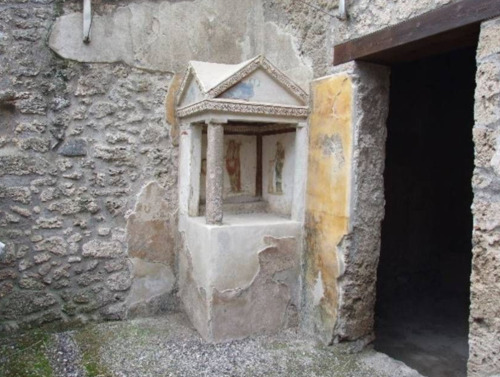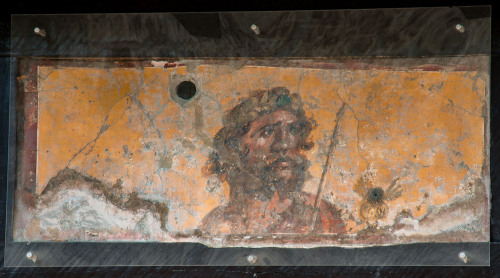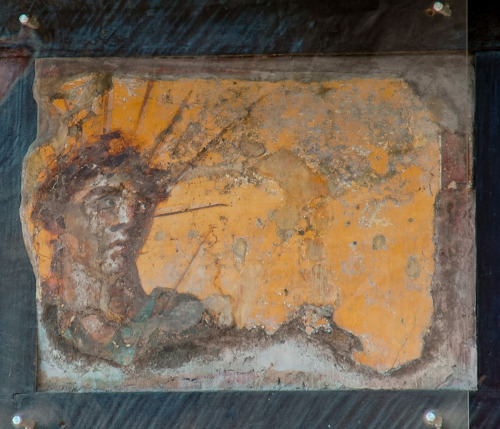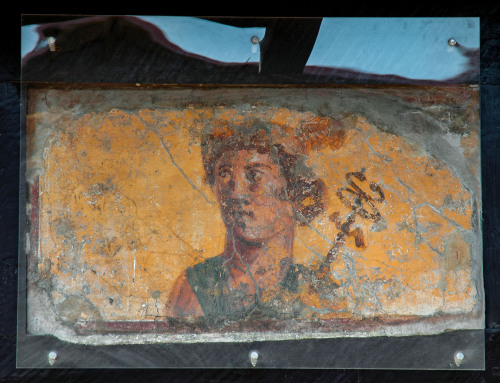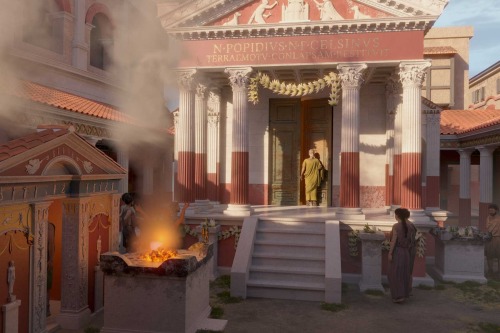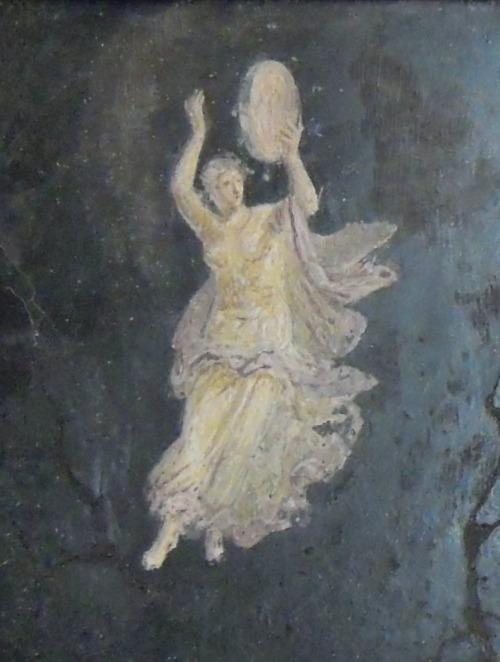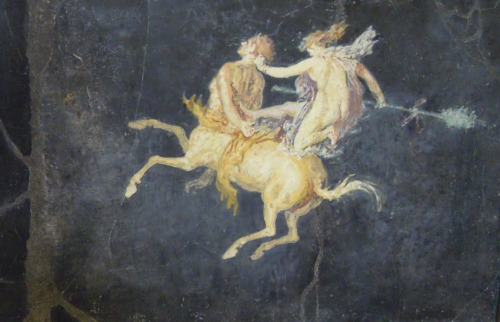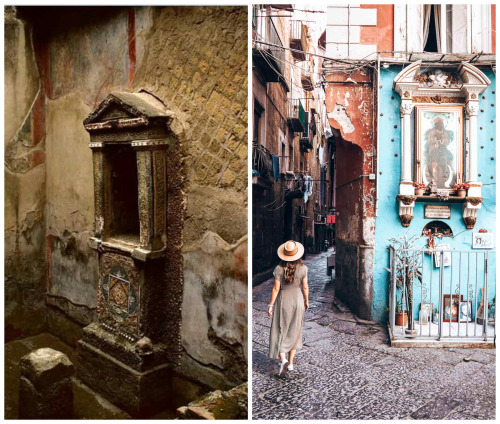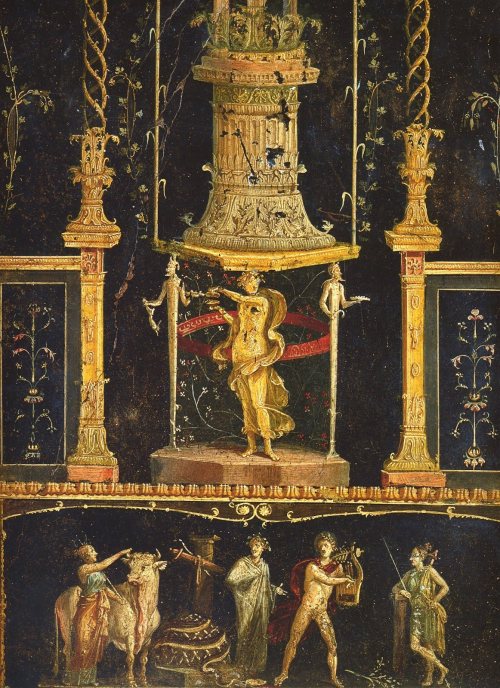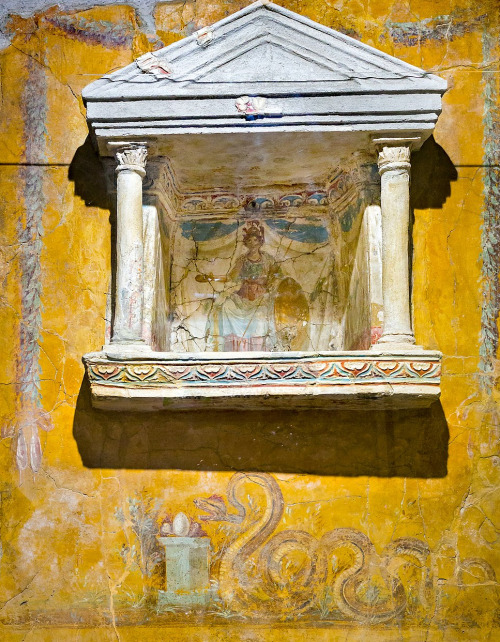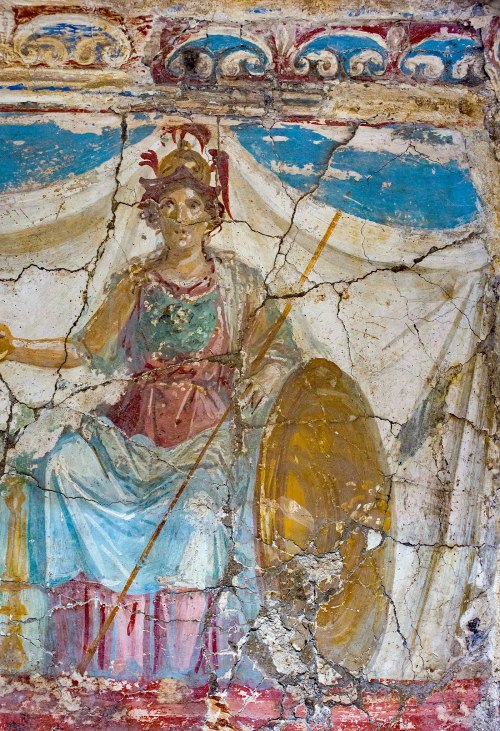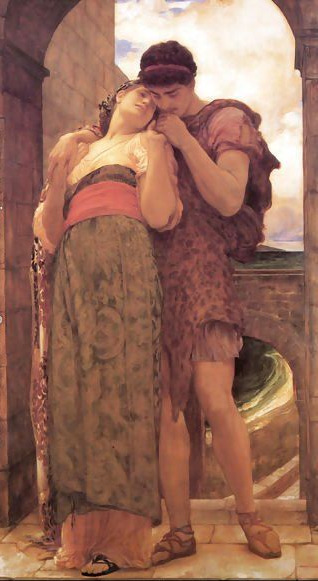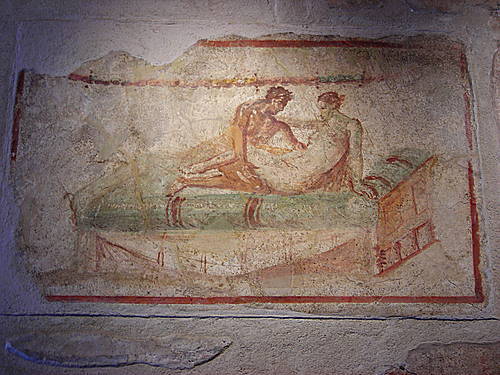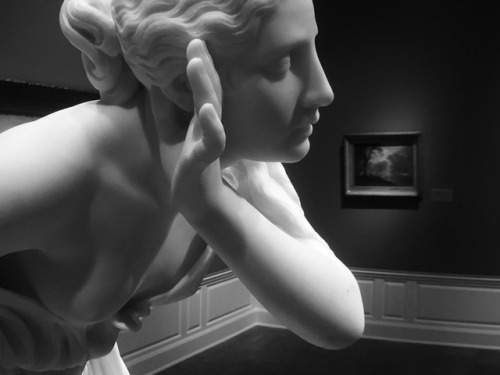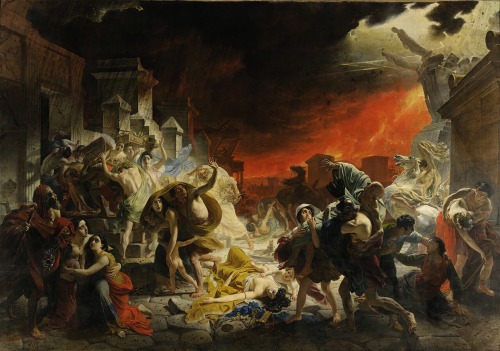#pompeii
Sacellum (sacred enclosure) in the House of the Ephebe, decorated with a painting depicting Mars and Venus.
Pompeii, Italy
Post link
“The paintress”. Fresco from the House of the Surgeon, Pompeii.
Naples Archaeological Museum.
Post link
House of The Venus and The Four Gods, Pompeii
Venus of Pompeii, with Eros and cupids.
Diana, goddess of the moon.
Jupiter, the elder god.
Helios, god of sun.
Mercury, god of commerce.
These 5 paintings are what gave the house its name.The paintings of the 4 gods are on the facade along with a painting that depicts a religious procession.
Evidently this house belonged to a very religious family.
Photos by Sergey Sosnovskiy (CC BY-SA 4.0)
Post link
The goddess Artemis. Wall painting from the Casa della Danzatrice, Pompeii.
Naples Archaeological Museum, Italy.
Photo by Luigi Spina
Post link
Wall painting from the Thermopolium/Caupona of Tertius (IX.7.21) Pompeii.
Goddess Fortuna, with cornucopia and rudder. (Naples Archaeological Museum)
Someone, perhaps the owner of the tavern, wrote on the wall:
CACATOR - CAVE MALUM = Shipper, beware of Evil.
Post link
The mythological beings used to fly and dancing in the wall paintings of Pompeii.
From the Casa di Cicerone.
Naples Archaeological Museum.
Pictures from: las-palabras-magicas.blogspot. (July 2010)
Post link
Lararium of Pompeii, and Street shrine of Naples. The Ancient Rome legacy.
Notice: I made this set of photos because I find the resemblance between the home shrines in Pompeii and the catholic shrines on the streets in beautiful Naples, as old as Pompeii and so incredibly similar, to be very interesting and adorable.
I am not comparing the beliefs of the ancient Romans with the Catholic faith, but the resemblance in art related to the religious.
Post link
Lararium with wall painting; goddess Minerva sitting on throne, and Agathodaemon / Genius Loci snake at altar with offerings (food).
Pompeii, Parco Archeologico, Antiquarium 63688.
By ArchaiOptix, CC BY-SA 4.0 via Wikimedia Commons
Post link
Methe of Attela, slave girl of Cominia, loves Chrestus. May Venus of Pompeii smile favourably on their hearts and let them always live in harmony.
Graffiti found on the corridor of the Theatre in Pompeii.
Post link
Roman fresco in the House of Marcus Lucretius Fronto, Pompeii.
Scene from the tragedyAndromache, by Euripides. Orestes kills Neoptolemos at the altar of Apollo in Delphi. Despairing Hermione, wife of Neoptolemos but previously promised to Orestes, kneels at the foot of the altar.
Post link
The Roman term for brothel, or lupanaria, is derived from lupa, the she-wolf who suckled Romulus and Remus.
Whores were associated with she-wolves because they often advertised their services with high-pitched, wolf-like cries. The tendency for she-wolves to lick their cubs also gave rise to the notion that lupae were proficient in oral sex.
Source: A Sexual History of London
Picture: Fresco inside a brothel- Pompeii
Post link
Nydia, The Blind Flower Girl of Pompeii
Artist: Randolph Rogers 1855/1884
Portland Art Museum
Post link
Pompeii victim’s genome successfully sequenced for first time | Italy | The Guardian
Scientists say man shares similarities with modern Italians and others who lived in region during Roman empire
… The man was aged between 35 and 40 when he was killed in the violent eruption of Vesuvius in AD79. Comparisons of his DNA with genetic codes obtained from 1,030 ancient humans, as well as 471 modern western Eurasian individuals, suggested his DNA shared the most similarities with modern individuals from central Italy and those who lived during the ancient Roman period. Analysis of his mitochondrial and Y chromosome DNA also identified groups of genes commonly found in Sardinia, but not among those who lived in Italy during the empire, suggesting there may have been high levels of genetic diversity across the Italian peninsula at that time.
Further analysis of the man’s skeleton also identified lesions in one of the vertebrae and DNA sequences suggested he may have had tuberculosis before his death. …
Post link



